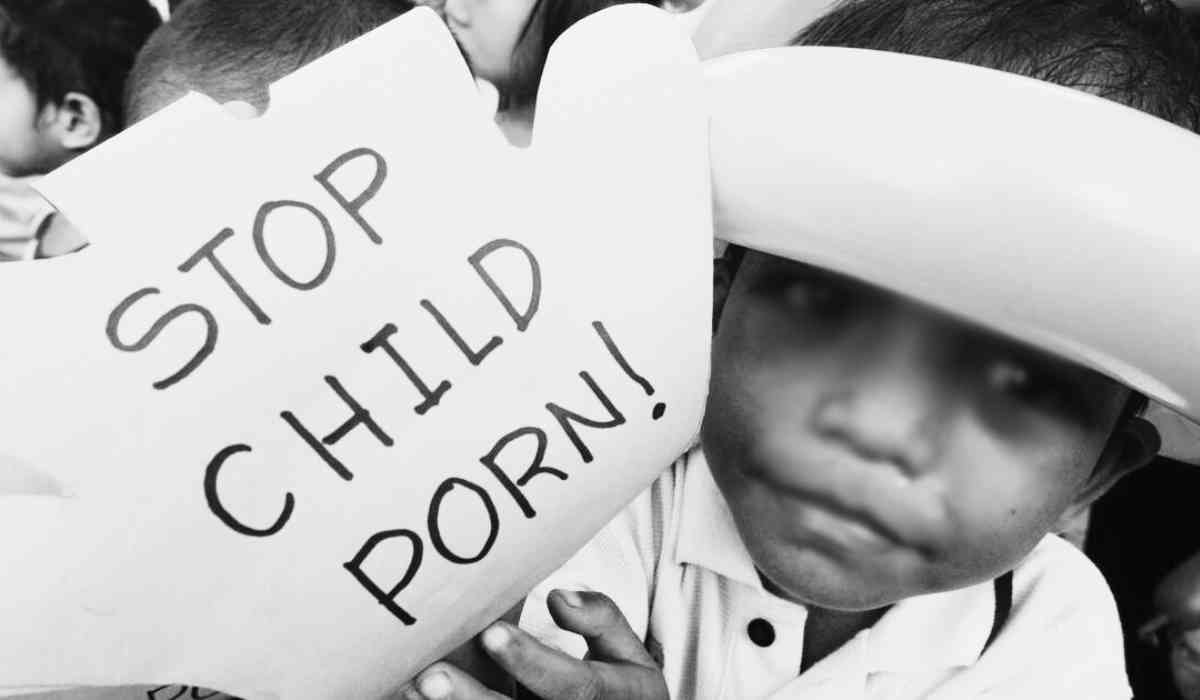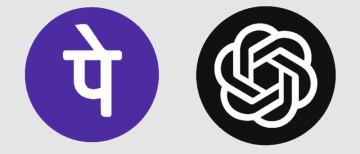Over time, the definition of 'online sexual predators' has changed considerably. In the beginning, it talked of those who took advantage of youngsters online for sex. The techniques and reach of these predators increased with the development of digital technology. While chat rooms and instant messaging were exploited by predators in the past, they increasingly prey on youngsters on social media, gaming forums, and other online places. These days, the phrase covers a broad spectrum of actions, such as trafficking in child sexual abuse materials, pressure to produce sexual content, and grooming.

Historical Evolution
1. The Early Internet Era: The internet became generally available in the late 1990s and early 2000s. Chat rooms and instant messaging have been used by online sexual predators to connect with possible victims.
2. The Rise of Social Media: In the middle of the 2000s, predators discovered new ways to connect with and entice children with the introduction of social media sites like Facebook and MySpace.
3. Current Environment: Today's predators take advantage of kids on a range of platforms, such as gaming forums, Instagram, Snapchat, and TikTok. The dissemination of information about child sexual abuse is facilitated, in large part, by the dark web.
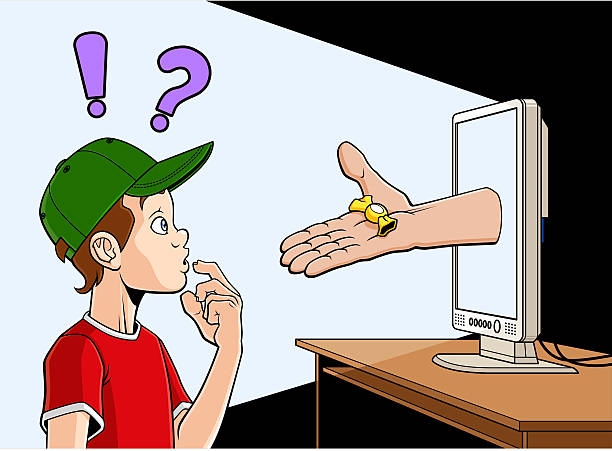
Effects on Minor Victims
The impacts of online sexual abuse on minors are severe and persistent. These effects may manifest as social, psychological, or bodily.
1. Psychological Trauma: PTSD, anxiety, and sadness are frequently experienced by victims. Prolonged emotional discomfort can result from feeling violated and betrayed, particularly if the person who violated them was someone they trusted. According to Crimes Against Children Research Centre research, in the previous year, almost one in five young people who use the internet reported receiving unsolicited sexual advances.
2. Medical Health Issues: As a result of forced or aggressive sexual practices, victims may experience medical side effects, such as STDs and, in extreme situations, bodily injury.
3. Social Repercussions: Victims of stigma and shame may find themselves cut off from their friends and community. It can be harder for them to build wholesome connections in the future.
4. Effect on Education: Trauma can impair a child's focus and academic performance, which can result in educational setbacks.
5. Dangerous Behaviours: As a coping tactic, some victims may resort to substance misuse or other dangerous behaviours.
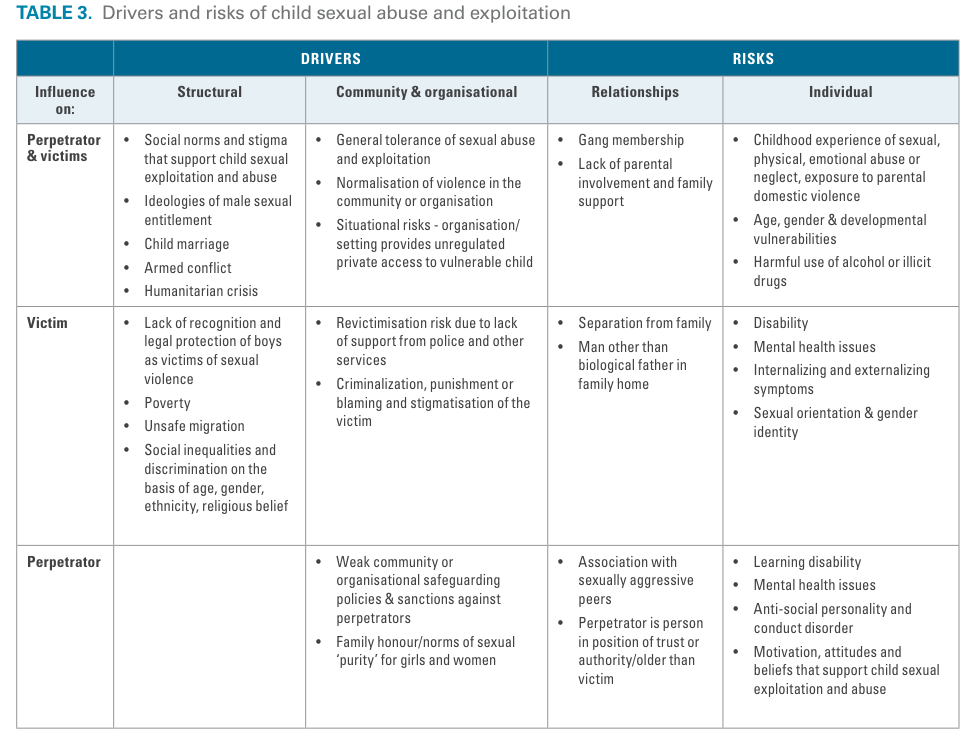
Information and Quantities
1. Global Scale: Child Light- Global Child Safety Institute with the University of Edinburgh, reports that over 300 million children worldwide are victims of sexual abuse online every year. The organisation performed a poll and discovered that one in three global internet users is a youngster, underscoring their vulnerability.
2. US-specific: According to research from the University of New Hampshire, one in six American youngsters has been the victim of internet sexual abuse.
3. Australia, the UK, and the USA: Data from these nations demonstrate the pervasiveness of the issue by indicating that a sizeable percentage of youngsters have been the target of online predators, and more so when the predator is their peace of mind.
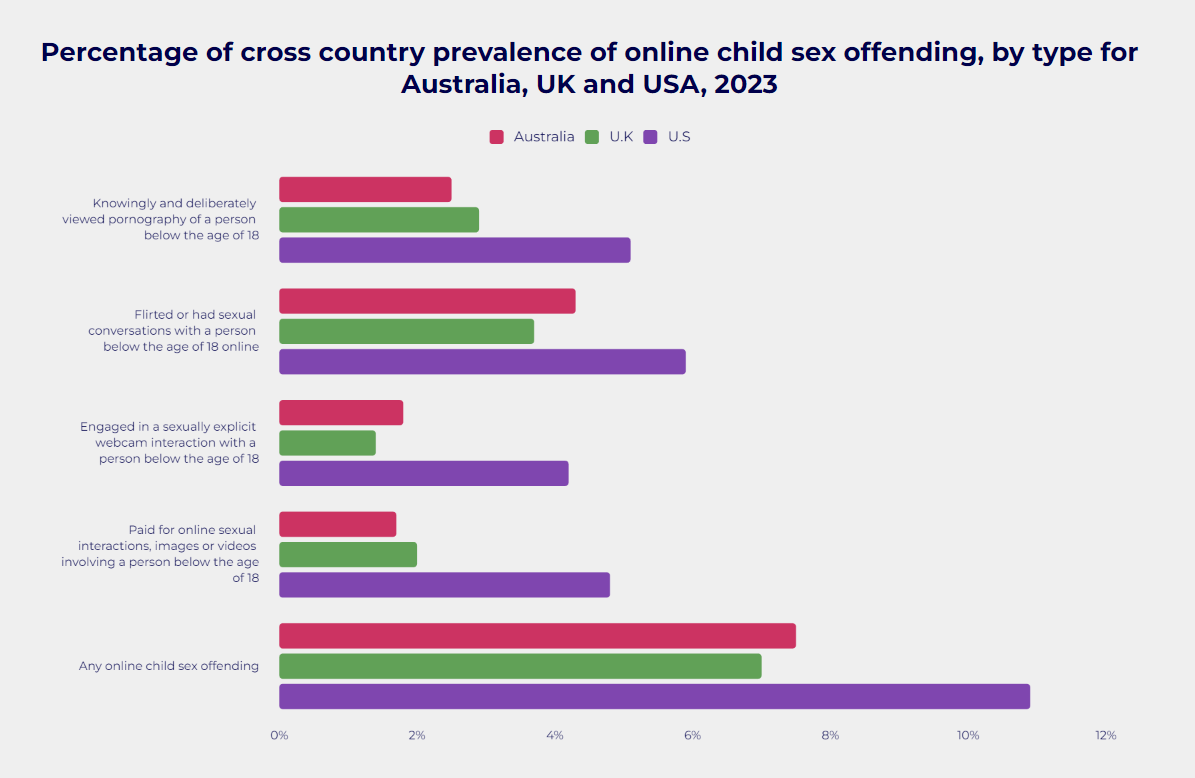
Percentage of cross country prevalence of online child sex offending, by type for Australia, UK and USA, 2023
India's current state
The situation is just as bad in India. According to reports, a sizable portion of children experience sexual abuse online. UNICEF reports that millions of children, especially girls, are sexually abused, frequently by a person they know and trust. One form of violence that has increased with the increasing use of digital technologies is online exploitation.
Indian Statistics and Reports
1. Prevalence: According to research by the non-governmental organisation CRY (Child Rights and You), 19.8% of Indian children are at risk of being exploited online.
2. Law: To address this issue, the Indian government has passed legislation like the Information Technology Act , Digital Personal Data Protection Act (DPDPA) of 2023 and the Protection of Children from Sexual Offences (POCSO) Act.
3. Recent Reports: The National Crime Records Bureau (NCRB) reported in 2022 that during the previous two years, there had been a 22% increase in reports of child sexual abuse in India, with a large percentage of those cases including internet abuse.
4. Initiatives: The Ministry of Home Affairs' Cyber Dost' campaign is one of several that aims to educate kids about online safety.
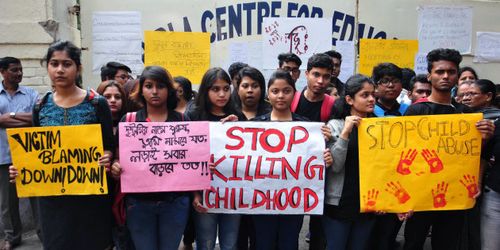
All-inclusive defence techniques
The threat of internet sexual predators must be addressed in a diverse way in order to safeguard children.
1. Law enforcement and legislation
- Tougher Laws: Passing and implementing legislation like the UK's Divisive 'Online Safety Act' ,that is more severe in regards to internet sexual exploitation.
- International cooperation refers to working together across boundaries to find and prosecute transnational offenders.
- Law enforcement training: giving cops and investigators specific instruction on how to handle instances of online harassment.
2. Industry Responsibility and Technology
- Technology solutions include developing content banning and detection systems powered by AI. Meta (formerly Facebook) reported a 30% increase in the use of AI approaches in 2023 to find and remove inappropriate content related to child sexual assault.
- Platform Accountability: Making digital and social media corporations accountable for stopping abuse on their networks. This problem was highlighted by Frances Haugen, a former Facebook engineer turned whistleblower, who exposed internal research conducted by Meta in 2021. The research revealed that the company was aware of the harmful effects its platforms had on the mental health of young people. This revelation underscores Facebook's knowledge of the risks associated with its platforms, especially for youth. Haugen's disclosure highlights the importance of social media companies taking responsibility for addressing these issues and the necessity of increased transparency in the tech industry.
- Reporting Mechanisms: Establishing child-friendly, anonymous reporting systems.

3. Education and Awareness
- Parental guidance is teaching parents how to keep an eye on their kids' internet use and spot abuse indicators.
- Programmes in Schools: Putting in place instructional initiatives to teach kids about digital citizenship and internet safety.
- Public awareness initiatives: launching national initiatives to increase knowledge of the dangers and indicators of cyberstalking.
4. Victim Support Networks
- Counselling Services: Offering victims counselling and psychological help.
- Rehabilitation Programmes: Providing rehabilitation initiatives to aid trauma survivors in their societal reintegration.
- Creating hotlines and helplines for the purpose of reporting abuse and requesting assistance.
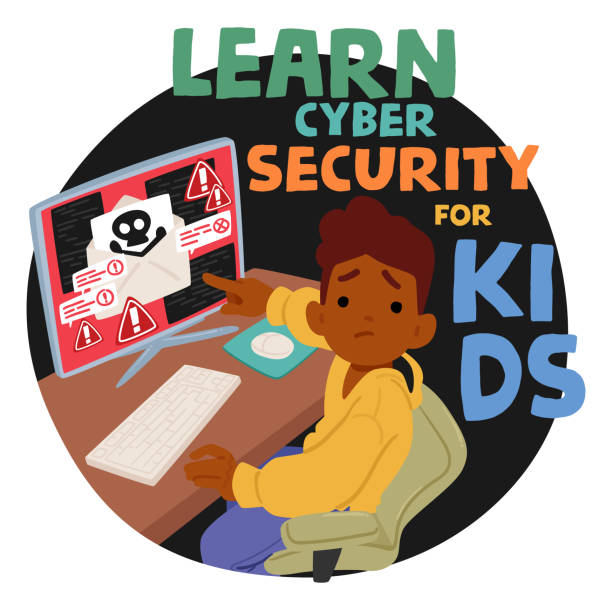
Final Thoughts
With the increasing integration of digital platforms into children's lives, the threat posed by "online sexual predators" is becoming more and more prevalent. The effects on victims are profound and complex, requiring all-encompassing approaches that include community assistance, education, and the law to safeguard children and aid in the healing of survivors. The statistics from India and throughout the world highlight how urgent it is to continue working to stop online sexual exploitation of minors and protect them in the digital era.
With inputs from agencies
Image Source: Multiple agencies
© Copyright 2024. All Rights Reserved Powered by Vygr Media

